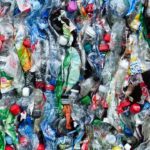Plastics are vital for our welfare but are sometimes highly damaging for the environment. That calls for either producing an environmentally friendly alternative or creating ways of recycling. A fantastic example of that is the recycling of diapers (nappies), an area in which the Netherlands leads the way in Europe.
In the Netherlands, about 300,000 tonnes of used diapers end up in municipal and provincial waste incinerators each year. This results in about 380 tonnes of CO2 being released into the atmosphere.
At waste energy plant ARN in Nijmegen, which generates energy from waste materials, the first reactor for processing used diapers on an industrial scale has now been built. The patent for the processing technology is owned by Elsinga Beleidsplanning en Innovatie in Ermelo, which is specialised in the sustainable processing of organic waste materials. If it proves to work, then the installation will be expanded with two additional reactors for a total processing capacity of 27,000 tonnes per year. That will require a total investment between 5 and 6 million euros.
Director Willem Elsinga provides a step-by-step explanation of the process. ‘This process requires a growing number of municipalities to switch to the separate collection of diapers. We still have a long way to go in that respect, because so far, only about 40 of the 400 municipalities in the Netherlands are doing this.’
Microspheres
The collected diapers are heated to a temperature of 250oC, which causes the polypropylene and polyethene components to melt and separate from the organic material. Due to the heat, pathogens and medicine residues are almost completely broken down.
The molten plastic subsequently solidifies into spheres with a diameter of 1 to 2 centimetres. These are brought to specialised companies, where they are washed, dried and ground and subsequently sold to extrusion companies. These press the ground material at 220oC through a mould with small holes, which gives rise to a granulate of pure plastic granules that can be used as a raw material for a range of plastic products.
The organic material is fermented and composted. Sulphuric acid is used to convert the ammonia from the urine that is released during the process into ammonium sulphate, which Dutch farmers can purchase as a legally recognised fertiliser.
During the fermentation process, bacteria convert the material into 40 percent CO2 and 60 percent methane. This biogas is sent to installations for co‑generation, which provide heat on location or green electricity to the grid network.
The fermentation residue is dehydrated, and the thickened “cake” is placed in composting tunnels. The dry compost produced in this manner is used as a fuel for biomass plants.
Output
Ultimately, 1 tonne of diapers produces 88 cubic metres of biogas, 86 kg of compost, 4.4 kg of artificial fertiliser and 93 kg of plastic granulate. The recycling of used diapers saves 480 kg of CO2 per tonne of diapers compared to their incineration.
The energy used by the process is high-pressure steam from the adjacent waste energy plant ARN in Nijmegen. This is about 50 percent biogenic, as the waste incinerated there consists for about 50 percent of wood, plant remains, paper and other plant-derived substances.
Elsinga: ‘As the plastics in diapers are quite expensive, some diaper manufacturers are working on biodegradable alternatives, such as polylactide. One-hundred percent biodegradable diapers are already on the market, but their market share is still very small.’




